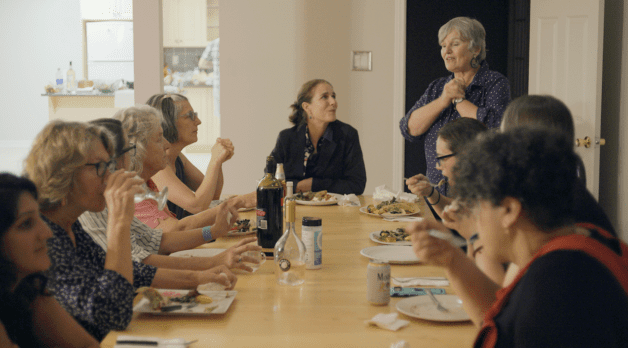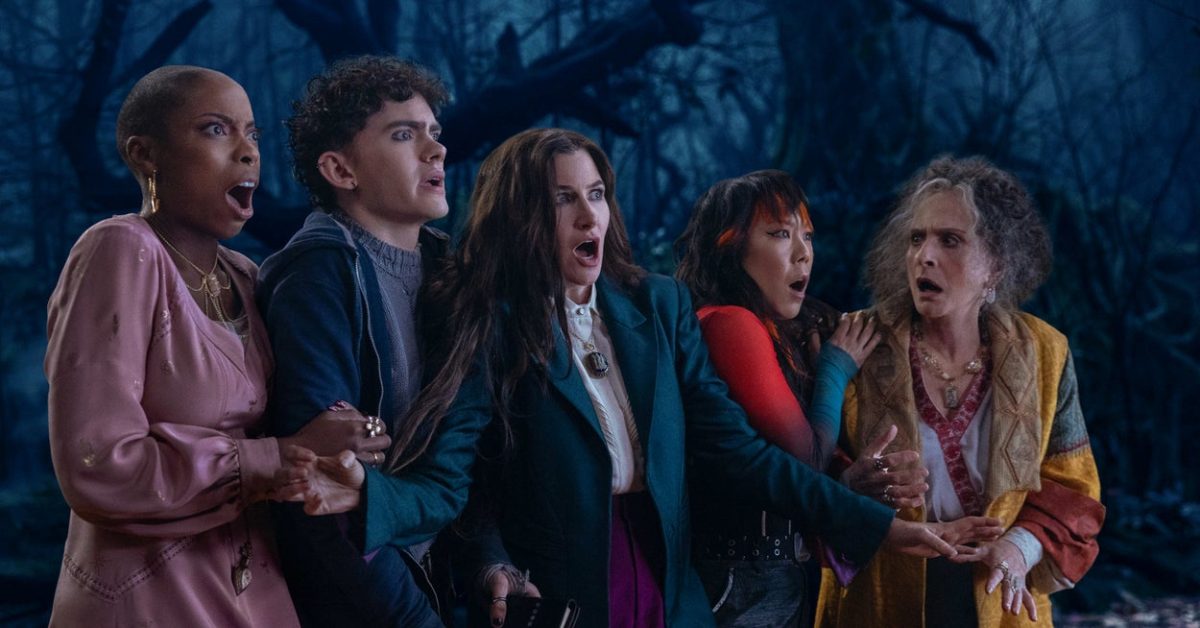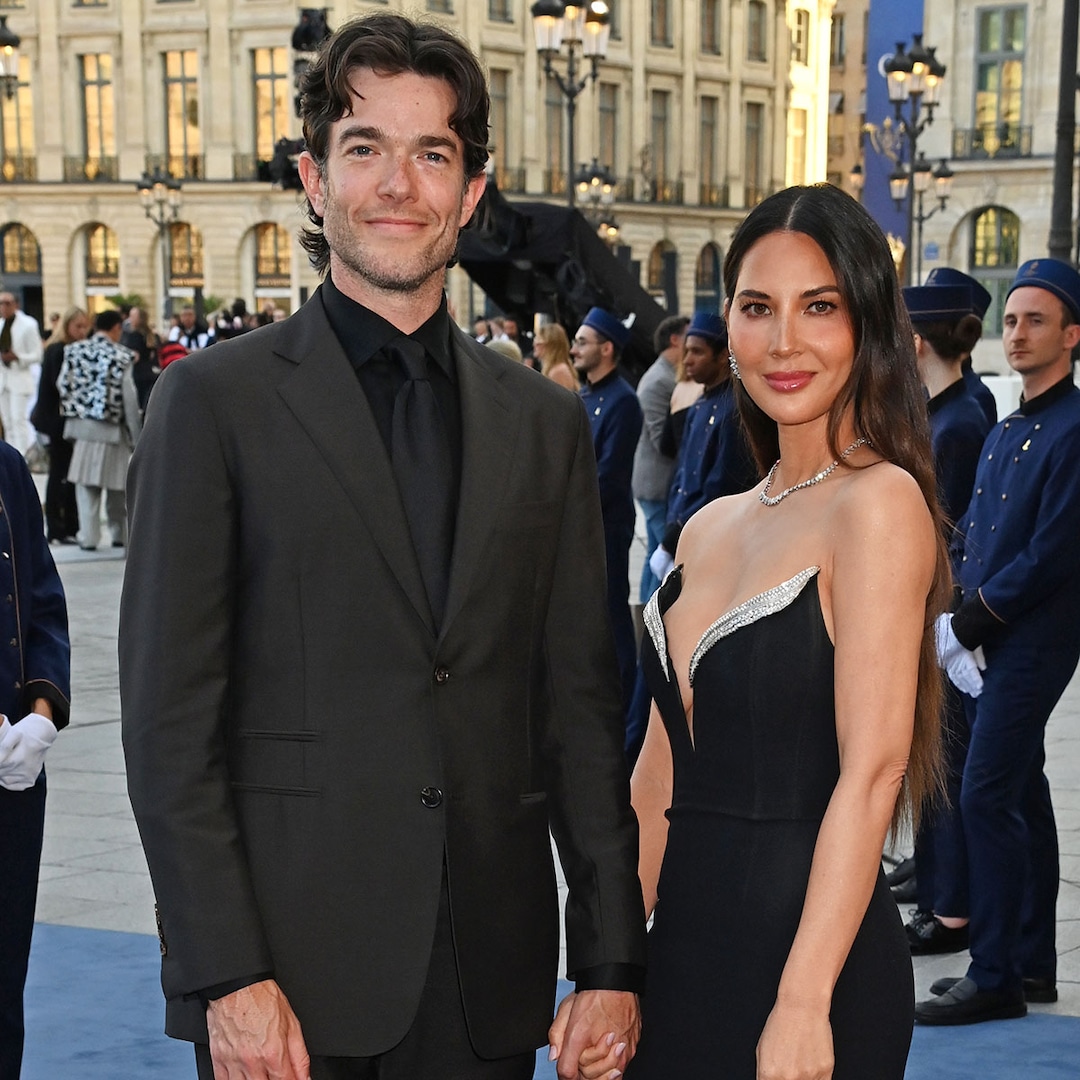
“Rules Are Perhaps the Most Useful Ally in Creativity”: Editor Meredith Perry on PLAN C
Jan 28, 2023
PLAN C, courtesy of Sundance Institute.
During a period of horrifying restrictions on women’s reproductive rights, Francine Coeytaux’s grassroots organization Plan C is actively fighting back by aiding individuals across the country gain access to vital abortion medication. Documentary filmmaker Tracy Droz Tragos follows the plight of Coeytaux and her allies in the aptly titled PLAN C, which premiered at the 2023 Sundance Film Festival.
Editor Meredith Perry tells Filmmaker about how her experience working on PLAN C ultimately solidified her understanding of reproductive justice as a whole, and much more.
See all responses to our annual Sundance editor interviews here.
Filmmaker: How and why did you wind up being the editor of your film? What were the factors and attributes that led to your being hired for this job?
Perry: An editor friend of mine recommended me to cut a sizzle in order to raise production funds for Plan C. When I first got on the phone with Tracy regarding the project, Ruth Bader Ginsburg had just passed away the day before and we were both reeling from that loss and profoundly aware of its implications for reproductive rights in the U.S. It was during the 6 weeks we spent cutting the sizzle that I began to fall in love with the characters and the film’s subversive call to action. The more I worked with the material the more important telling this story became. Tracy was able to see my value as a storyteller through the selects and scenes I cut in that short time and when more funding came in, she brought me on as lead editor.
Filmmaker: In terms of advancing your film from its earliest assembly to your final cut, what were your goals as an editor? What elements of the film did you want to enhance, or preserve, or tease out or totally reshape?
Perry: It may sound strange to say that Plan C is a fun movie about abortion, but it’s true! At its core, this film focuses on a group of real American heroes and has a clear and moving call to action. Early on we hit on the parallels between Plan C and a heist film, and I cut montages to temp tracks from Ocean’s 11 that really gave the cut momentum and felt so right for the story we were telling. In other sections of the film, we stayed true to Tracy’s understated aesthetic; spending time with people in their homes, seeing the cookies they bake, the dogs they feed, and the partners who love them. While our main character, Francine Couteaux, is a lovely grandmotherly presence, she is also an unapologetic, triumphant revolutionary, and I felt strongly about honoring all the different sides to her.
Filmmaker: How did you achieve these goals? What types of editing techniques, or processes, or feedback screenings allowed this work to occur?
Perry: I believe rules are perhaps the most useful ally in creativity. Plan C’s 300 hours of footage was shot in 14 states over 4 years and follows a network of people fighting for change. Handling the complexity of the material was a heavy lift, establishing rules early on helped clarify and shape our epic and unwieldy story. Before we reached the assembly phase, we cut sequences that we called “pods”. Typically a pod featured one or more characters, imparted an important piece of the story, and had a beginning, middle, and end. When enough pods had been built, we used miro.com as a virtual index card wall and began to think about structure. While shaping the pods into acts, we hit on a concept Tracy coined the “baton pass”. This referred to the way one pod related to the next with a clear through line tying them together. This way of thinking about structure was so important for grounding the viewer and keeping our story flowing.
Filmmaker: As an editor, how did you come up in the business, and what influences have affected your work?
Perry: I started writing and making short films in undergrad at The Evergreen State College and learned to edit by trial and error. After painfully editing a few short films that way, over the holidays I took home a giant manual on Final Cut Pro to my grandparent’s house and read it cover to cover. I had dinked around so much by then that I didn’t need to have the program in front of me to get brought up to speed, so when I got back to school I was ready to start trying things out and very quickly became a much more proficient editor. In 2006 I went to grad school at Cal Arts for film directing and got a job editing a narrative feature. Once that project wrapped, the producer recommended me for my first feature documentary… and down the road I rolled. Many of the best jobs I’ve had have come to me by word of mouth, and after editing for 14 years professionally, I cherish my relationships with co-editors, directors and other collaborators. It’s magical when I get to work with a director I love more than once. My tastes in film are pretty broad; some of my all time favorite documentaries are How to Survive a Plague, The Act of Killing and more recently Some Kind of Heaven. I’m particularly interested in films that span a broad range of emotional possibilities from light to dark, making you laugh one minute and cry the next. The power to provoke an intense visceral response is what I live for as an audience member and what I look for when I’m shaping a scene.
Filmmaker: What editing system did you use, and why?
Perry: I cut Plan C in my barn edit suite on one of the San Juan Islands in WA. We used Premiere Pro because of its ease of use and flexibility. I have my tried and true layout and keyboard shortcuts saved to a thumb drive on my keychain so it’s simple to plug in anywhere and have everything just so. Plan C heavily utilized Premiere’s built-in effects in doing the many blurs we used to protect our characters. It was clutch to have so much control over the way the blurring looked during the assembly and fine cut process.
Filmmaker: What was the most difficult scene to cut and why? And how did you do it?
Perry: Our absolute biggest challenge was Plan C’s opening sequence. We must have cut 25 versions of the first twenty minutes because we needed to introduce key players, alert our audience to the existence of abortion pills, impart historical context for the pills in the United States, and basically get our hooks into the audience so they would ride with us to the end… whew!
The two elements at war during Plan C’s edit were mystery and clarity. We found that a cold open, teasing the lengths these women were ultimately pushed to provide abortion access, was necessary to grab our audience’s attention. This intrigue prepared them for the pills’ historical context, and once that foundation was laid, we were ready to meet our heroes. During this process we had weekly test screenings with Q&As afterwards to determine how the film was playing and that feedback was invaluable in pointing us where we needed to go.
Filmmaker: What role did VFX work, or compositing, or other post-production techniques play in terms of the final edit?
Perry: Obscuring or blurring locations and identities became an important part of the editing process. Several key characters in this film had to remain anonymous and many more locations needed to be generic and not traceable to protect our participants from violence and/or prosecution. We found that pulling back on what could be seen deepened and enriched the film. Incorporating blurs early in the process upped the stakes for the audience, reminding them, each time something was obscured, of the danger our heroes faced.
The “mosaic blur” was something we used frequently when we wanted to highlight someone’s concealment. Rather than use a more generic blur that would make something “out of focus” or “traditionally blurry”, a mosaic blur gave the viewer something interesting to look at, creating a glittery, mobile image through which you could see eyes blinking or a mouth moving while still protecting identifiable features.
Filmmaker: Finally, now that the process is over, what new meanings has the film taken on for you? What did you discover in the footage that you might not have seen initially, and how does your final understanding of the film differ from the understanding that you began with?
Perry: When I first discussed the project with Tracy, Roe v. Wade was still law, and the constitutional right to abortion in place. The project was simply an exploration into why no one knew about abortion pills in the U.S. Many people, including myself, thought the pills were the same as Plan B and had no idea that someone could safely and effectively end a pregnancy up to 11 weeks using these medicines. In our final days of shooting everything had changed, and the film had morphed into a study on resisting oppression, a how-to on taking control of your reproductive freedom in these darkest of times.
One of the final pieces to fall into place during our edit was a built-in call-to-action. Advanced Provision, having the pills on hand without being pregnant, is available by mail in all 50 states. I’ve got abortion pills in my medicine cabinet right now and you should too. Everyone in the U.S. can buy abortion pills online through aidaccess.org to give to a friend, or for when they might need them. The political systems working tirelessly to take away our right to bodily autonomy won’t have a chance if we band together to make sure these medications are available. Now that Plan C is set to premiere at Sundance, when I look back at who I was before I took this project on, I realize that abortion, to me, was something singular, something cut and dry, something you were for or against, and now I see abortion as an ingredient in the much more complete concept of reproductive justice.
Publisher: Source link
Every New Character Added To The MCU
Agatha All Along: Every New Character Added To The MCU Realizing that Wanda took all her power, Agatha's solution lies at the end of The Witches' Road, a series of trials that will reward those with what they are missing…
Oct 26, 2024
John Mulaney Shares Emotional Tribute to Wife Olivia Munn
"She shared her story to help anyone she could," John, who wed Olivia in July after three years together, continued. "According to the National Cancer Institute, in the week after Olivia shared the story of her breast cancer journey, there…
Oct 26, 2024
Eva Mendes Said There Have Been Times Where She’s “Regretted” Getting Cosmetic Work Done And Had To “Wait It Out”
Eva, who turned 50 this year, has previously said she would “never deny” getting cosmetic work done.View Entire Post › Disclaimer: This story is auto-aggregated by a computer program and has not been created or edited by filmibee.Publisher: Source link
Oct 25, 2024
Nicole Kidman Confirms Another Iconic AMC Ad Is “In the Making”
Nicole Kidman's 16-Year-Old Daughter Looks All Grown Up in Rare Public AppearanceWe come to this place for Practical Magic. At least, that’s a past role Nicole Kidman is channeling to tease that another AMC ad—like the movie theater chain’s original…
Oct 25, 2024










